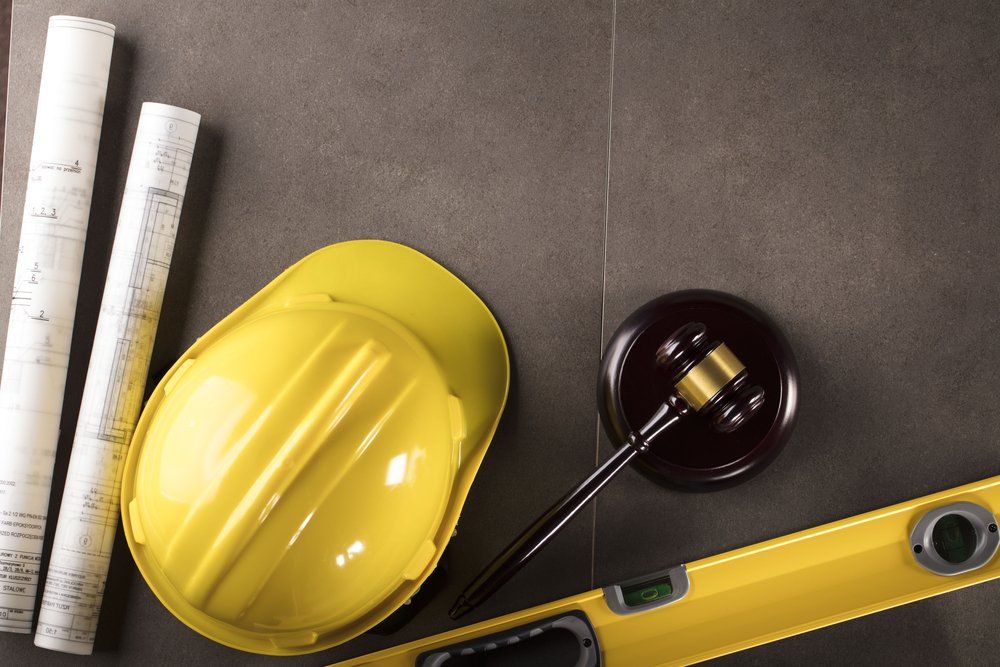Construction Site Safety
OSHA requires that employers provide work site conditions that are clean and dry and free of known dangers. It is also the employer’s responsibility to provide any appropriate personal protection gear and training about job hazards in a language that workers understand. A construction accident attorney could help you file a worker’s compensation or personal injury claim if you were injured on the job.
Employers can take various precautions, both pre-site and on-site, to keep workers safe and the project on track.
Pre-site Precautions
Training
Although most construction workers’ skills are gained on the job, safety techniques are best learned before they step foot on the site. Training can encompass the proper use of ladders, procedures regarding working around electricity, and basic fall protection concepts. Having regularly scheduled safety training sessions on-site can ensure workers stay current with best practices and use the skills in an environment where safety measures are essential.Communication
Accidents often occur when workers don’t know what to expect. Ensuring the day’s goals, expectations, and activities are clear before the start of the shift can cut down on surprises that could end in injuries. Equipping workers with walkie-talkies, headsets, and phones allow for quick, efficient communication among site employees. In addition to improving safety, this opportunity for clear and concise communication can help the project move forward faster.Technology
Thanks to technological advancements, many dangerous activities can utilize equipment, such as drones, to remotely conduct site inspections, safety audits, and observations. Software on smartphones and tablets enables managers to share project data instantaneously. When everyone has immediate access to critical information remotely, equipment costs and timelines can often be reduced. Wearable devices that include video and location tracking improves response time when an accident occurs, which helps streamline rescue and evacuation procedures.
On-Site Precautions
Construction sites are hazardous, even under the best conditions. Taking steps that decrease the likelihood of accidents can help save time and money on the overall project. Here are some of the most common types of accidents on a worksite and the actions that can make a positive difference in worker safety.
Scaffolding
Scaffolds are an integral component of most construction sites. More than two million workers utilize them each year. When used as intended, they can save time and money. The majority of the individuals hurt in scaffold incidents report that the accident occurred due to improper assembly of the unit or the employee slipping or hit by a falling object. Below are the four primary scaffold hazards and actions that can minimize accidents.Safety Measures
Using materials meant for scaffolding is critical. Concrete blocks, loose bricks, barrels, or boxes are inappropriate and hazardous. A person familiar with and trained for the proper assembly and use of a scaffold under the specific conditions required can help ensure that the structure can do the job for which it was intended. Other steps that improve worker safety include: Ongoing inspection of scaffoldingFalls
Construction site falls are one of the most common causes of serious injury on a worksite. OSHA safety standards require fall protection for heights of ten or more feet. General contractors often prefer to exceed safety margins by requiring fall protection beginning at six feet. Fall hazards can occur when scaffolds are used or erected improperly, but that is not always the case. Human error and unexpected events can result in a fall.Fall Protection
In addition to guardrails, mid-rails, and toeboards on scaffolds, various safety equipment can make a worksite safer. Using elevated platforms or aerial lifts, body harnesses, and safety net systems can further reduce injuries and fatalities. It’s not only from an elevated surface that falls occur on a construction site but also stairs and areas with a slick or uneven surface. Adding treads on walkways and stairways and handrails on stairs that rise more than 30 inches reduce trips, slips, and falls.Electrocution
Construction workers account for a significant number of electrical injuries every year. They are four times more likely to be electrocuted than workers in other industries and is one of OHSA’s Fatal Four hazards in the construction industry. Wiring methods, general electrical requirements, and lockout/tag-out are among the most common safety violations on a worksite. Injuries most often occur when there is direct contact with a power source. However, the number of injuries resulting from indirect contact with electricity, such as when dealing with control panels, junction boxes, transformers, and light fixtures, is high also. Many of the workers on the construction site who suffer electrocution injuries are not electricians. They are roofers, service workers, and general laborers.Electrocution Prevention
Controlling contact with electrical current is one of the most effective ways to reduce electrocutions. One way to do that is to prohibit work on new and existing circuits unless all power is shut off and grounds are attached. Identifying overhead power lines, using extension cords with grounding prongs, and prohibiting multiple plug adapters can also improve safety on the worksite.Contact Construction Accident Lawyers
If you were injured due to employer negligence on a worksite, an RMK Law construction accident lawyer
can counsel you to help you navigate complex legal procedures. Our team of attorneys are committed to helping
injured workers get the compensation they are entitled to for injuries, lost wages, disabilities, and other losses due to their accident. Contact us online
or reach out to our laws office by phone at (406) 601-1400
to schedule a consultation to discuss the details of your case and anything you know of that's unlawful with one of our experienced lawyers.
_______
Contact Us Online
Image Credit: Shutterstock/ Bannafarsai_Stock
The post Construction Site Safety appeared first on Ritchie Manning Kautz PLLP.












